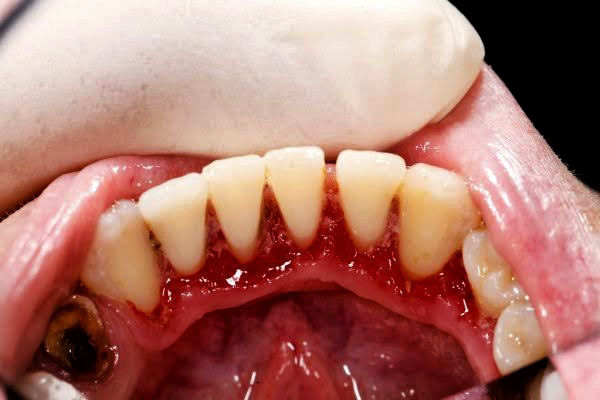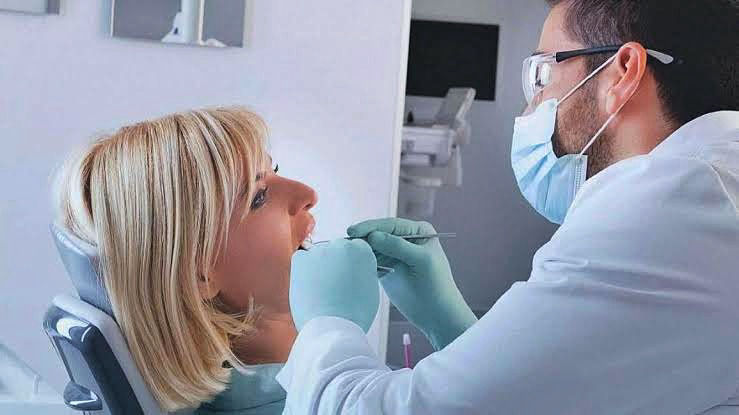A Donor Bill of Rights


Source: Deposit Photos. https://bit.ly/3gleqss
Gingivitis is a medical condition characterized by inflammation of the gums (gingiva) due to certain causes such as microbial infection (mainly), but may be mechanical (gum injury) in some cases. It is considered a periodontal condition, meaning that it does not affect the teeth, but only occurs in areas around the base of the teeth. Due to its mildness in most cases, it is usually ignored or the symptoms are managed at first, until the damage to the gums get worse and it eventually progresses into a severe disease that can result in tooth loss.
The most common cause of gingivitis is poor oral hygiene, leading to the growth and accumulation of harmful bacteria around the teeth to form a plaque. Naturally, dental plaques occur on the teeth from time to time when colonizing bacteria try to adhere to the surface of a tooth. The presence of this bacterial plaque may not be harmful at first, but will eventually cause dental problems when the plaque accumulates. As the plaque builds up, it hardens over time and remains strongly attached to the surface of the tooth (along with the bacteria). The accumulation of such bacteria around the teeth can trigger the immune response, causing immune cells to infiltrate that area of the gums and elicit inflammation, which may be further worsened by the metabolic products from the bacteria that are capable of slowing digesting the substance of the gum and causing destruction of gum tissue. If left untreated for long periods, the inflammation will eventually progress into a more severe form that can cause loosening and loss of teeth.
In mild cases, there may be little or no symptoms. The condition may progress painlessly and without any immediate warning signs, but eventually, certain manifestations gradually occur that point toward gum inflammation. Some of such symptoms include bleeding of gums spontaneously or after brushing, signs of red, tender or swollen gums, persistent bad breath, feelings of pain while chewing or when the gums are touched, formation of deep pockets between the teeth and gums, loose teeth, noticeable changes in the way the teeth fit when biting, etc. When adequate dental care is not administered, the inflammation may eventually progress to a full-blown gum disease (periodontal disease). The inner layers of the gums gradually start to pull away from the teeth, forming small pockets of exposure that can be infected by the bacteria, causing further worsening of inflammation. The resultant gum destruction gives rise to loosening of teeth and eventual tooth loss.
A Dentist through a dental examination can diagnose gingivitis. The Dentist inspects the teeth and gums for signs of gum bleeding, swelling, softness, pocket depth between the gums and teeth, tooth sensitivity, signs of a shaky tooth, and signs of improper teeth alignment.
The major aim of gum disease treatment is to reduce swelling, depth of pockets, risk of infection, and to stop disease progression. The type of treatment mainly depends on the stage of the disease and the overall health of the individual. Nonsurgical treatment methods include professional dental cleaning to remove the plaque and tartar from around the teeth and below the gum line, as well as smoothening any rough spots on each tooth (planing) to remove bacteria and ensure a smooth, clean surface for the reattachment of gums to the teeth. In addition to these, there are a number of surgical treatments for gum disease, which include pocket reduction surgery to reduce the space between the gums and teeth so as to limit bacterial growth beneath the gums, bone grafting to replace any aspect of the jaw bone that has been destroyed by gum disease, soft tissue grafts to reinforce thin or receding gums, and guided tissue regeneration to stimulate the growth of bone and gum tissues in order to fill up any pocket areas naturally. Note that nonsurgical treatment of gingivitis is usually the main treatment method needed to treat gum disease. However, surgical methods become necessary when the gum and bone tissues around the teeth are significantly damaged and cannot be repaired by nonsurgical methods. Antibiotics can also be used in the treatment of gingivitis to eliminate the bacteria associated with gum disease.

Source: Healthline. https://bit.ly/3yaqGC5
Gum disease can be primarily prevented by daily brushing of teeth (twice a day) using a fluoride-containing toothpaste and a toothbrush with soft bristles. Brushing removes plaques on the surface of the teeth and limits harmful bacterial growth. Flossing should also be done daily to remove food particles and plaque from in between the teeth and under the gum line, which are places your toothbrush cannot reach. Antibacterial mouthwashes can also be used to rinse out one’s mouth in order to limit harmful bacterial growth, plaque formation and prevent bad breath. Other supplementary preventive measures include avoidance of smoking, reducing stress levels, maintaining a balanced diet, and avoiding any activities that require frequently grinding or clenching your teeth, as this puts excessive pressure on the supporting tissues of the teeth.
Healthline (2019). Gum Disease (Gingivitis and Periodontitis). https://www.healthline.com/health/gingivitis#TOC_TITLE_HDR_1
Newman T (2018). Causes and Treatment of Gingivitis. Medical News Today. https://www.medicalnewstoday.com/articles/241721
WebMD (2021). Gingivitis and Periodontal Disease (Gum Disease). https://www.webmd.com/oral-health/guide/gingivitis-periodontal-disease
Website was created with Mobirise